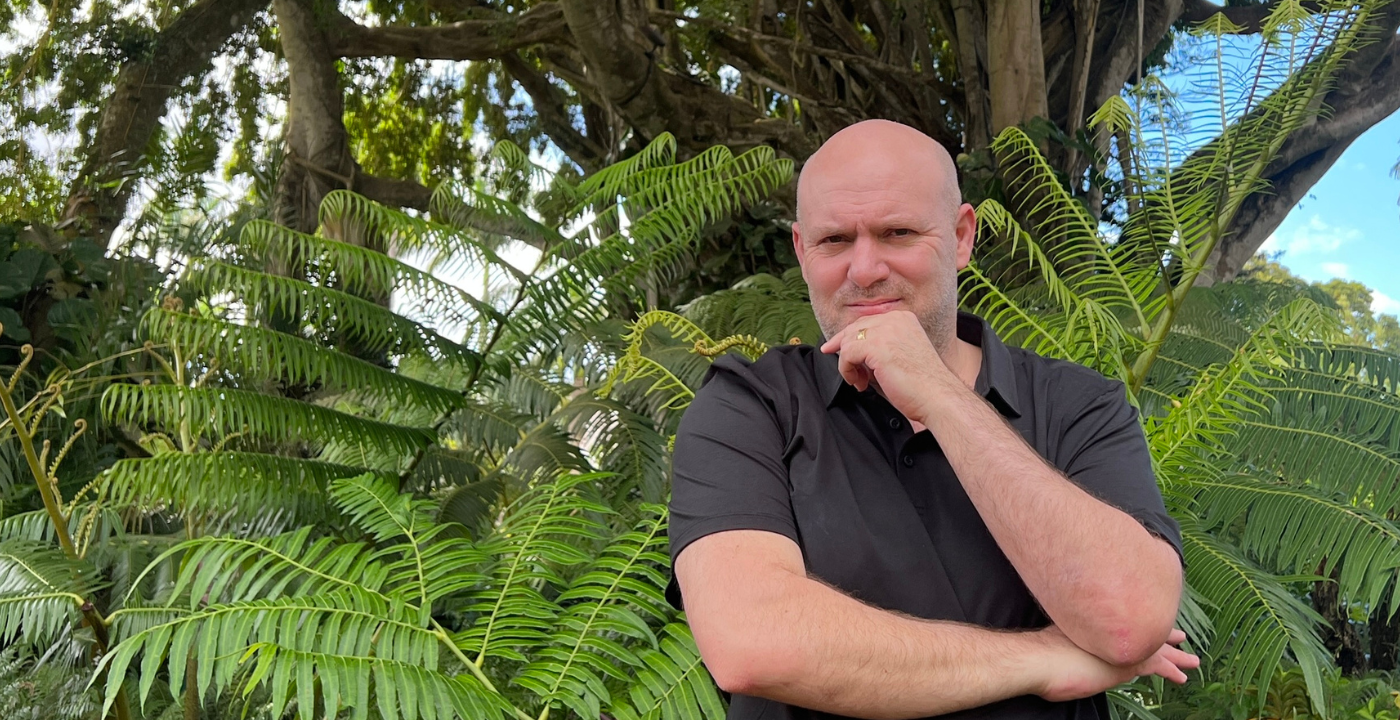Sphene has more brilliance than diamond. Extremely rare, extremely collectible.
That is one location of sphene. Now if you like more of the amber colors and greens and yellows and amazing sparkle and dispersion, and that whole spectrum of the rainbow: Madagascar sphene. That stuff pops. You get life, you get luster, you get dispersion, you get fire. Where the material that comes out of Russia tends to be more on the greenish side, Madagascar covers the whole spectrum. There is one other locale that has been discovered. We’ve discovered sphene in Zimbabwe. It’s very very limited, it’s not usually clean, and I only deal with clean, so I bought the rough and I’ve sold the rough. I never really cut these stones because I can’t get a darn clean out of it. I want it clean! Because sphene is dispersive, and when you got the fire, you got the luster, and when you got the luster, you got the brilliance. Sphene is a happy, happy gem. If you like gems that make you happy, then you can sphene all day long because it has more brilliance than diamond. Extremely rare, extremely collectible.
Anyway, Zimbabwe, we don’t get the clean. Madagascar will blow your head off. That stuff is brilliant. It’s dispersive, it’s alive, it’s vibrant, and I go after it. Now, the mine in the northern part of Madagascar that I discovered put it on the map. Unfortunately it’s no longer available, which is common in my world. Right? So we’ve looked for sphene in different locales. Sphene was also discovered in Capelinha in Brazil, there’s a small town in Brazil that produced some sphene. We also found some sphene in India. But really small, sporadic pockets of this material. And once again, I only deal with the best. I only deal with the finest quality sphene. Because what I’m looking for is the superpower that sphene has. What’s that superpower? I want to see dispersion more than a diamond. You know, I don’t get this whole idea of buying a gemstone that doesn’t have sparkle. I mean, what’s the point, right? You buy a diamond, I’m wearing a 5.00 carat diamond, and it looks like frozen spit. It looks like a frozen ice cube. It doesn’t even have sparkle. What’s the point of that? Diamonds should sparkle, baby. And so should sphene.
They should sparkle. Right? Because they have the power to.
I sell off all the rough, and don’t get me wrong, there’s a market for included sphenes. It’s a big market, people are always asking me for
more rough material, but I cherry-pick out the clean and the nice stuff. And I like them in green, I like them in greenish-yellow, I like them in that golden color — a lot of times you’ll see them like a champagne rich, orangey-red, and they disperse green. They disperse yellow. They disperse blue. They disperse all the colors of the rainbow. Really a phenomenon when it comes to rarity.
And I’ve made this particular episode all about sphene, of course, because I love Sphene Kogan, he is my son, he also works with me every once in a while. I just sent him to Colombia. That was an interesting experience for him. I sent him on an emerald mission, into the Bogotá Highlands. Sphene Kogan, named after one of the most dispersive gems in the world — you’ll meet him one day, I’ll bring him on the podcast. I’m digressing here, but you know, he’s my son, I named him after the discovery of sphene, so I might as well get into it, right? But I sent him to Colombia, I’ve sent him to India, I’ve sent him to different parts of the world to hunt down rare gems. He’s only 21 right now. But he’s getting good. Better start late than never start, right? That’s my theory. He graduated from the Gemological Institute of America, and I said, “Son, now let me send you into the real world.” And that’s where it is.


